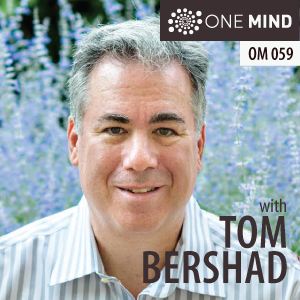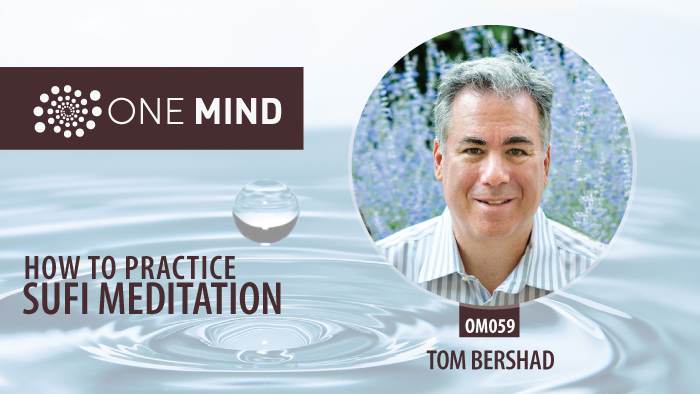

What is Sufi meditation and how do you practice it? Aboutmeditation.com cofounder Tom Bershad has practiced the Sufi Way for over two decades.
Tom started meditating as a young man when he formally took up Transcendental Meditation (TM) in the early ’70s. Now, over 40 years later, he’s logged thousands of hours of meditation.
But for the last two decades, Tom has practiced Sufi meditation under guidance of a seasoned teacher.
This special 2-part episode with Tom Bershad is a deep dive into Sufism and how to practice sufi meditation.
In Part 1, we explore the goal of Sufism and in Part 2, Tom shares the extraordinary story of his visit to the tomb of the greatest Sufi teacher to ever walk the earth, Jalāl ad-Dīn Muhammad Rūmī.
Part 1: The Goal Of Sufi Meditation
In Part 1, we explore a range of questions touching on the history of Sufism, the role of the teacher, the goal of the Sufi path, and how to practice Sufi meditation techniques.
We also explore the initial steps that mark the beginning of the path in the Sufi tradition.
Tom share’s captivating stories about the origins of Sufism that are surprising and how it relates to Islam. He also illuminates why and how Sufism is such a universal path.
Here are some of the key questions we cover:
- What is the (short) history of Sufism?
- Isn’t it an Islamic Mysticism?
- Do you have to be a Muslim in order to practice Sufism?
- What is the origin of the word “SUFI”?
- Is Sufism like any other path or tradition? How is it different?
- In Sufism, what are the basic beliefs or assumptions about REALITY that it teaches?
- How does the Path of Sufism work? What are the steps on the Way?
- Where do you learn Sufism?
Part 2: Visiting The Tomb of Rūmī (Listen)
In part 2, we explore in more detail the meditative practices and technique that make up the Sufi Way. Tom outlines how Sufism was translated for Western values and how he met his own teacher.
But the heart of this episode is the extraodinary story of Tom’s experience visiting the tomb of Rūmī, a 13th-century Persian poet, jurist, Islamic scholar, theologian, and Sufi mystic.
Rūmī is considered the greatest Sufi teacher to ever live.
In the West, most of us know Rūmī through his rhapsodic poetry, a meditation on the spiritual life and divinity which has stood the test of nearly 1,000 years.
Visiting the tomb of Rūmī is considered an important milestone and experience for anyone who walks the Sufi Path. Tom’s story of his visit to Rūmī’s tomb in Turkey is otherworldly.
In part 2, we cover questions like:
- Can anyone learn the Sufi Way?
- What are Teaching Stories?
- Why is Sufism sometimes considered a context of Energy Management?
- What is the goal of Sufism?
- What is meditation like in the Sufi Way?
- What are the basic practices of Sufism?
- What are Whirling Dervishes and who was Rumi?
- What is the significance of visiting the tomb of Rumi for someone in the Sufi Way?
Sufism – Love and Life Force
I came away from this interview with an enriched understanding of this ancient and revered spiritual path. Tom conveys the essence of Sufism as a path of love. The Sufi is devoted to supporting the life force of the universe through service, devotion, and above all, love.
When you spoke about others just talking about themselves and draining you, may I ask what do you do when in that very circumstance. I mean like serious time drains, hour or hours . I feel rude to just say that I have to go. Or to even be honest and say, “you are just draining me”! Thanks so much for your time as I really do appreciate it.
Hey! I love your blog. I just made a meditation video for my undergraduate senior seminar class! Please give me some feedback of how I can improve! Looking forward to hearing some comments. Thank you!
https://www.youtube.com/watch?v=EhHZ1bvdoos
Hi Linda:
I certainly understand how you feel and have been in that situation many times myself. I prefer to use humor to redirect the energy. If that isn’t appropriate I find a way of being humble about needing to take care of a personal need, or feigning illness. It is always helpful to leave a situation like this without having to make the other person feel bad. Sometimes though, being honest or direct is the only way. I have had to do that on occasion and much to my surprise found that the other person was quite aware that they are being a “drain” but nobody was ever honest with them about it before. You might find that the other person is actually grateful for an honest exchange that helps them to be more aware and in the end more capable.
The impulse to be kind and “sit there and take it” is part of a cultural overlay we have been programmed with since childhood. Learning how to move skillfully through these obstacles is part of the training of awareness needed to achive freedom from conditioned patterns.
Hopefully this helps clarify a few more options in how you think about and handle these kind of situations. Feel free to contact again if you feel the need.
Kindly,
Tom
Hi
Would like to know in order to practice Sufism..must one be a muslim?
Thanks.
Ashok.